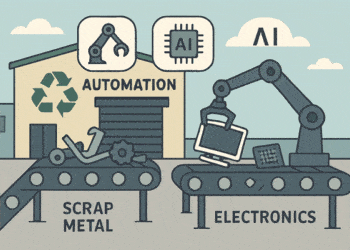Construction workers face a wide range of occupational hazards. According to the Occupational Safety and Health Administration (OSHA), falls, electrocution, being struck by an object and caught-in/between accidents are the four leading causes of fatalities in the construction industry. However, there are many other potential hazards that workers may encounter, such as exposure to hazardous chemicals and materials, repetitive motion injuries, and heat exhaustion.
Employers in the construction industry must prioritise worker safety and take all necessary steps to mitigate these risks. Here are some key strategies for safeguarding construction workers from occupational hazards:
Provide Proper Training
One of the most important things employers can do to protect their workers is to provide proper training. Workers should be trained on how to operate equipment safely, use protective gear, and recognise potential hazards. This training should be ongoing to ensure that workers are up to date with the latest safety procedures and best practices.
Training should also be tailored to specific job tasks and hazards. For example, workers who operate cranes or other heavy machinery should receive specialised training that covers safe operation procedures, signalling, and communication protocols.
Use Appropriate Safety Equipment
Workers should be provided with personal protective equipment (PPE) such as hard hats, safety glasses, gloves, and earplugs from reputable PPE suppliers. Employers should also ensure that all equipment is properly maintained and inspected regularly.
In addition to PPE, employers can also use engineering controls to reduce hazards. For example, installing guardrails or nets around open edges can prevent falls. Using dust suppression systems or ventilation can reduce exposure to hazardous chemicals or dust.
Implement Safety Protocols
Safety protocols should be developed and implemented to ensure that workers follow safety procedures at all times. Employers should also have a written safety plan that outlines what to do in case of an emergency.
Some specific safety protocols that should be considered include:
- Protocols for working at heights, including ladder safety, scaffolding safety, and fall protection.
- Procedures for handling hazardous materials, including proper storage, labeling, and disposal.
- Guidelines for operating heavy machinery safely, including communication protocols and procedures for avoiding collisions.
- Protocols for working in confined spaces, including ventilation requirements and rescue procedures.
Conduct Regular Safety Inspections
Even with the best training and safety equipment, hazards can still arise on construction sites. This is why regular safety inspections are so important. Employers should conduct regular safety inspections to identify potential hazards and address them before they become a danger to workers.
OSHA requires employers to provide a safe workplace for their employees and regularly inspect the workplace for hazards. Employers must also correct any hazards that are identified during inspections.
Encourage Communication
Finally, employers should encourage communication between workers and management to ensure that everyone is aware of potential hazards and any safety concerns. Workers should be encouraged to speak up if they notice any safety concerns or hazards. Employers should also have an open-door policy, so workers feel comfortable reporting any issues or asking questions about safety procedures.
Construction work is inherently dangerous, but by prioritising worker safety and taking all necessary precautions, construction employers can create a safer environment for their workers and reduce the risk of workplace accidents.







